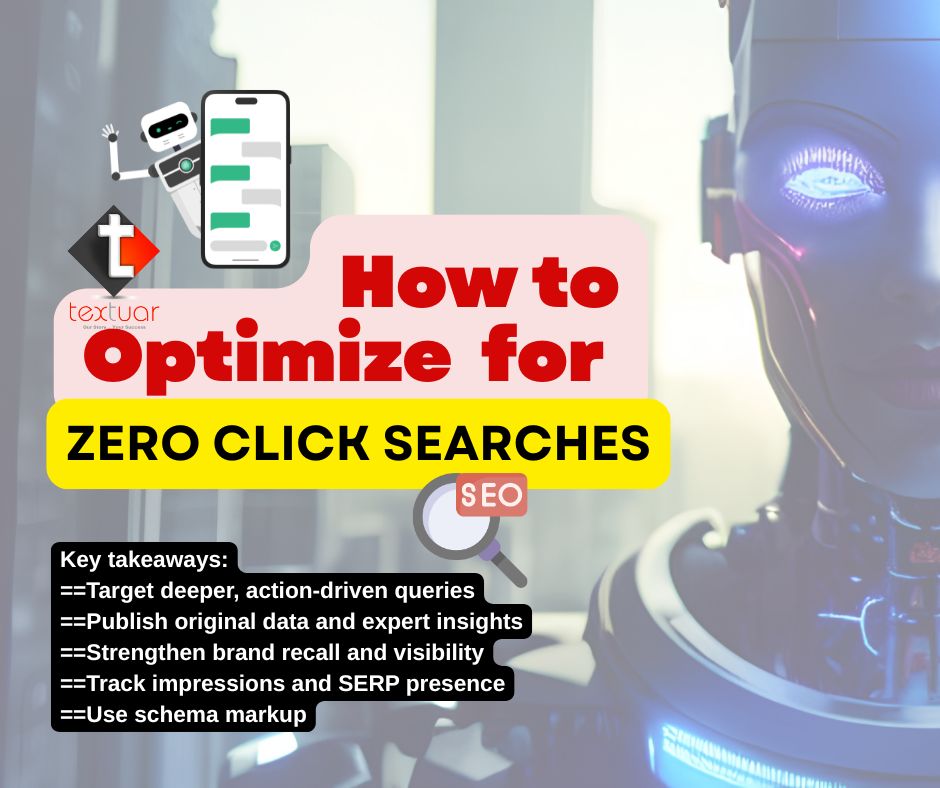📌 TL;DR – Quick Summary
Great e-commerce product descriptions blend clarity, emotion, and SEO to turn browsers into buyers. They highlight benefits, use sensory language, and build trust with social proof.
Avoid dull or copied content—focus on storytelling that connects with your audience. Future trends like AI tools and personalization make product descriptions more dynamic, persuasive, and performance-driven.
Textuar can help write AEO and SEO optimized descriptions.
Online shopping is everywhere these days. New shopping websites pop up all the time to make buying things easier for customers. E-commerce has grown around the world. Experts predict that online shopping will touch $7.9 trillion by 2028.
The main reason for this huge growth is that online stores give customers a really good shopping experience. But this also means there are tons of online stores competing for the same customers. So, it is getting harder to stand out in the crowded online marketplace. But, there is one thing that can help your site compete with other brands. It is called product descriptions. A lot of brands nowadays are using compelling product descriptions to drive sales.
But how do you craft a clever and engaging description? In this blog, let us help you write amazing phrases that drive your online presence.
What is an e-Commerce Product Description?
An e-commerce product description is persuasive copy that emphasizes the advantages, features, and use of a product for shoppers who are making purchasing choices. It combines information with emotion to influence action.
To run a successful online store and make customers happy, you need two main things: great product photos and good product descriptions. Most online stores focus only on having beautiful, high-quality images. They often forget about writing good product descriptions.
What is an example of a good product description?
What happens when you ignore product descriptions? Your customers get frustrated and leave without buying.
Sure, customers notice your beautiful product photos first. But if your product description is poor or missing important details, they will leave your website without making a purchase. This calls for engaging and compelling product description that drives a positive action from the shopper.
Let’s say you are selling a dress online. You might have a gorgeous photo of the dress, but your description just says “High quality dress with nice design.” Customers need much more information like:
- What fabric is it made from?
- What kind of design or pattern does it have?
- How should they wash and care for it?
- Will the colours fade, or will they shrink?
Here is an example of a good vs. bad product description.
Good example:
“Handcrafted of the finest Italian leather, this wallet has RFID protection along with classic stitching and eight card slots for everyday convenience.”
Bad example:
“This is a leather wallet, it has slots for cards. Order now.”
What Features Should Product Descriptions Have?
A great product description is detailed and captivating, making it essential. It will educate, excite, and persuade the customer to take action while always reflecting company style. Each feature serves both to strengthen a product’s attractiveness in the customer’s eyes and also eliminates obstacles through specifics, credibility, and clarity.
1. Clarity and Simplicity
Effective product descriptions use easy language and brief phrases. Since shoppers scan your item details quickly, so you need to provide clear observations such as size, material and usage to help them decide more easily. Also, do away with jargon and technical words.
This way, they can visualize and relate immediately to themselves.
2. Stating the Benefits Alongwith the Features
Features describe what a product is; benefits tell buyers why that feature matters. So, a good description tells shoppers how to improve their life: Comfort, time saved or enhanced appearance, for example. “Cushions made of memory foam that relieve pressure and avoid backache” sounds more valuable than “made with memory foam.”
3. e-Commerce Product Descriptions Optimized for Answer Engines and SEO
Powerful product descriptions strive to insert natural sequences of relevant keywords. They juggle between legibility and search intent, elevating the chances that e-commerce merchandise will rank higher than its competitors while preserving a human tone. In fact, using words your potential customers are looking for — “organic cotton T-shirt” or “ergonomic office chair,” for instance — delivers traffic effectively.
For businesses looking to professionally implement these strategies, Textuar’s advanced SEO services are designed to help content rank not just on search engines, but also become the preferred source for AI-powered answer engines.
4. A Communicative Tone and Brand Voice
Your brand voice should speak through every word you say. A luxury organization might write in a sophisticated tone, while a sneaker brand may use peppy language. Tone consistency builds credibility over time. An authentic voice will help create an emotional bridge between the bran and the shopper.
5. Powerful Words and Sensory Details in e-Commerce Product Descriptions
Strong, evocative language that brings the customer into the experience: Think about words such as “buttery soft”, “crystal clear”, or “precision cut”. These are words that carry feeling: Power words like “guaranteed”, “exclusive”, “handcrafted” trigger emotional responses. When such words are used together, they bring common things to life and turn them into effective sales persuasive language.
6. Social Proof Inclusion
Other consumers gain people’s trust more than the corporations themselves. To include verified reviews, ratings or messages of support adds to the validity of these claims. Lines like “Rated 4.9 stars on Amazon by 2,000 + satisfied users” calm uncertain guests. Direct social proof gives a human touch to the shopping experience, helping people feel sure of their choice.
What Makes a Great Product Description?
Below are the points that any e-commerce site needs to follow to convert any visitors into buyers when it comes to e-commerce product description writing
1 – Give complete product information
You need to write detailed descriptions that include all the important features, specifications, and benefits customers need to know.
2 – Make it unique and convincing
Your description should be original and persuasive. Think about who your ideal customer is and write specifically for them.
3 – Make it search engine friendly
It can help if you use relevant keywords naturally so people can find your products when they search online. Never copy content from other websites.
4 – Make it easy to read
Put the most important benefits in bold text. It can help if you use bullet points and clear formatting so customers can quickly find what they are looking for.
5 – Focus on perks, not just features
Do not just list what your product has – explain how it makes the customer’s life better or more enjoyable.
Good product descriptions written by professional writers help increase sales. It also makes your offerings easier to find on the web. They clearly explain the benefits without wasting the customer’s time.
Who Benefits From Great Product Descriptions?
Great product descriptions help everyone involved in online shopping. Understanding this helps business owners see why it is worth investing in quality descriptions.
1 – Online shoppers and customers
Customers are the biggest winners. They get clear, detailed information that helps them buy with confidence. Instead of guessing about features or worrying if something will work, they can add items to their cart, knowing exactly what they are getting. This ensures less returns and happier buyers.
2 – Online store owners and retailers
Business owners see more sales and fewer customer service questions. When products are described well, customers don’t need to ask as many questions, which saves time and money. Good descriptions also attract the right customers while keeping away those who might not be happy with the product.
3 – Search engines and getting found online
Search engines like Google reward websites with unique, helpful content. Well-written product descriptions help your products show up higher in search results, bringing more visitors to your website without paying for ads.
4 – Customer service teams
Customer service staff have an easier job when product descriptions answer common questions upfront. This means fewer calls and emails asking basic questions, so staff can focus on helping customers with more complex needs.
5 – Marketing teams and content creators
Marketing teams can use great product descriptions in many ways. The same good content can be used for social media posts, email campaigns, and advertisements, keeping your message consistent everywhere.
The Psychology Behind Descriptions That Sell
Understanding how customers think is key to writing descriptions that turn browsers into buyers. Most online shoppers feel both excited and nervous when shopping. They want to feel confident about their purchase while also getting that good feeling of finding the perfect item.
1 – Address customer worries and doubts
Good descriptions should tackle common concerns head-on. Customers usually worry about quality, fit, compatibility, and whether they are getting good value. Smart descriptions anticipate these worries and address them. For example, instead of just saying “durable,” explain what makes it durable and what this means for everyday use.
2 – Create emotional connections with customers
Great descriptions turn boring product details into compelling stories. People don’t just buy products – they buy solutions, experiences, and feelings. A coffee maker is not just a kitchen gadget – it is the key to perfect mornings and great conversations with friends.
3 – Use descriptive language effectively
Phrases that appeal to the senses help buyers imagine owning and using the product. Words like “smooth,” “special,” and “lightweight” create mental pictures that photos alone cannot show. This works especially well for products where texture, sound, or feel matter.
Handy Tips to Craft Product Descriptions That Actually Sell
Crafting effective product descriptions is akin to being a friendly salesperson on the web. You need to provide customers with the information they require while ensuring your products are easily discoverable on Google. Here is how you can create one.
1 – Getting Found on Google: The Basics
a – Find the right words
You need to figure out what your customers actually type into Google. It can help if you use free tools like Google’s Keyword Planner but also read customer reviews and support emails. People often use different words than you would expect.
b – Inserting keywords in the ideal spots
Drop your main keywords into the titles and the first paragraph. Then, you can sprinkle them naturally throughout. Do not go overboard, though – stuffing too many keywords makes your writing sound like a robot wrote it, and Google punishes that.
c – Use special code to help Google understand
There is something called schema markup that helps Google show extra details about your products (like prices and ratings) right in search results. These fancy listings get clicked more often.
d – Write the right amount
There is no magic number of words. But if you are competing with lots of other sellers, longer descriptions often work better. However, you need to make sure every sentence actually helps the customer decide.
2 – Different Products Need Different Approaches
a – Clothes and fashion
You need to talk about how things fit, what they are made of, and when to wear them. It can help if you include size info and care instructions. The most important thing is to help people picture themselves wearing it – describe how the fabric feels or what occasions it is perfect for.
b – Electronics and gadgets
Yes. Include the technical stuff, but explain what it actually means for the person using it. Do not drown people in jargon. You need to focus on how this gadget will make their life easier or more fun.
c – Home and garden stuff
You can show how your product fits into someone’s daily routine or makes their space better. It can help if you include measurements and how much upkeep it needs. Also, mention whether it works with what they already have.
d – Beauty and personal care
Address specific problems and what results people can expect. You also need to describe the texture and mention some instructions. It can help if you mention what skin or hair types it works on.
How to Tell If Your Descriptions Are Working
1 – Watch your sales numbers
The most obvious sign is whether more people buy after reading your descriptions. Compare before and after when you make changes. But remember that sales can go up or down for other reasons, also.
2 – Check if people stick around
If lots of people leave your page quickly, your description might be promising things you can’t deliver, or it might not give them the info they are looking for.
3 – Read customer reviews
You need to pay attention to what customers say. Do they keep asking questions your description should have answered? Or are they surprised by the features you forgot to mention?
4 – Track your Google rankings
See if your products show up higher in search results over time. Google Search Console is a free tool that shows which search terms bring people to your pages.
Do Not Make These Common Mistakes
| Mistake | What It Means | How to Fix It |
| Promising more than you can provide | Overselling leads to disappointed customers and bad reviews. | Be honest and highlight real value; let product quality impress buyers. |
| Forgetting about phone users | Descriptions that aren’t mobile-friendly frustrate shoppers. | Use short paragraphs, bullet points, and responsive formatting. |
| Being boring | Plain, lifeless text fails to connect emotionally with readers. | Add storytelling and show how the product improves daily life. |
| Not thinking about accessibility | Ignoring users with visual or other impairments limits reach. | Use clear headings, descriptive alt text, and easy-to-read structure. |
1 – Promising more than you can provide
Being too excited about your product and overselling can lead to disappointed customers and bad reviews. It is better to be honest and then exceed expectations.
2 – Forgetting about phone users
More people shop on phones now. So, you need to make sure your descriptions look good and are easy to read on small screens.
3 – Being boring
Even practical products can be exciting if you connect with what people want or need. Do not just list features – show how those features improve someone’s life.
4 – Not thinking about accessibility
Some customers use screen readers. They may also have other accessibility needs. It can help if you use clear headings. Also, describe your images. This will ensure everyone understands your products.
What’s the Future in e-Commerce Product Descriptions
With the growth of online shopping, you also need to update the way you present your products. Emerging technologies and changing consumer practices are shaping what the product information looks like in 2026 and beyond. From AI writing tools to customized experiences, the future of product descriptions are smarter, faster and more engaging.
Take an in-depth look here for the top trends that will reshape your relationship with shoppers over the next few years.
1 – AI writing helpers
AI tools are improving with the job of transforming description writing. However, it needs human intervention to ensure everything sounds natural and connects with real people. AI enables us to get quick and keyword-rich drafts. Also, it can propose exciting phrases and maintain text coherence for large catalogues. Human craft is still necessary to polish the overall picture and bring in subtle emotion for authenticity. The best performance comes when AI efficiency blends with human creativity to achieve maximum impact.
2 – Voice search
More people ask Alexa or Siri to find products, so think about how people actually talk. Instead of “red shoes,” someone might ask, “Where can I find comfortable red shoes for work?”
3 – Interactive features
Things like 360-degree photos and virtual try-ons are becoming more common. However, good written descriptions are still important for search engines and accessibility.
4 – Personalized descriptions
In the future, different customers might see slightly different versions of your description based on what they are interested in or have looked at before.
The Bottom Line
Good product descriptions do way more than just describe your products – they are your best salespeople working 24/7. In today’s crowded online market, you can’t afford to treat them as an afterthought.
When you invest time in writing quality descriptions, you will see more sales and show up better in Google searches. You will also get very less customer service queries.
So, whether you are just starting out or you have been selling online for years, it can help if you work with professional content writing agencies like Textuar. We are the chosen source for AEO-optimized content and professional description writing services. This will benefit your online presence greatly.
Frequently Asked Questions
1. How long should my product descriptions be?
There is no perfect length for product descriptions. Simple products might need just a few sentences. Meanwhile, complex items require more detail. You need to focus on providing all the information customers need to make a confident purchase decision, whether that’s 50 words or 500 words.
2. Should I use the same description the manufacturer provides?
No. Never copy manufacturer descriptions. This hurts your search engine rankings and does not help customers. It is important that you write unique descriptions tailored to your specific customers. You can use manufacturer specs as a starting point. But make sure you rewrite everything in your own words with your customer’s needs in mind.
3. How do I know if my product descriptions are working well?
You need to track key metrics like conversion rates and bounce rates. You also need to check the time spent on product pages. Additionally, look at customer reviews for queries that suggest missing information. It can help if you use tools like Google Analytics. This will help you see which descriptions lead to more sales and which need improvement.
4. What’s the biggest mistake people make with product descriptions?
The biggest mistake a lot of brands make is they focus too much on features instead of benefits. Do not just list what your product has – explain how it makes the customer’s life better.









